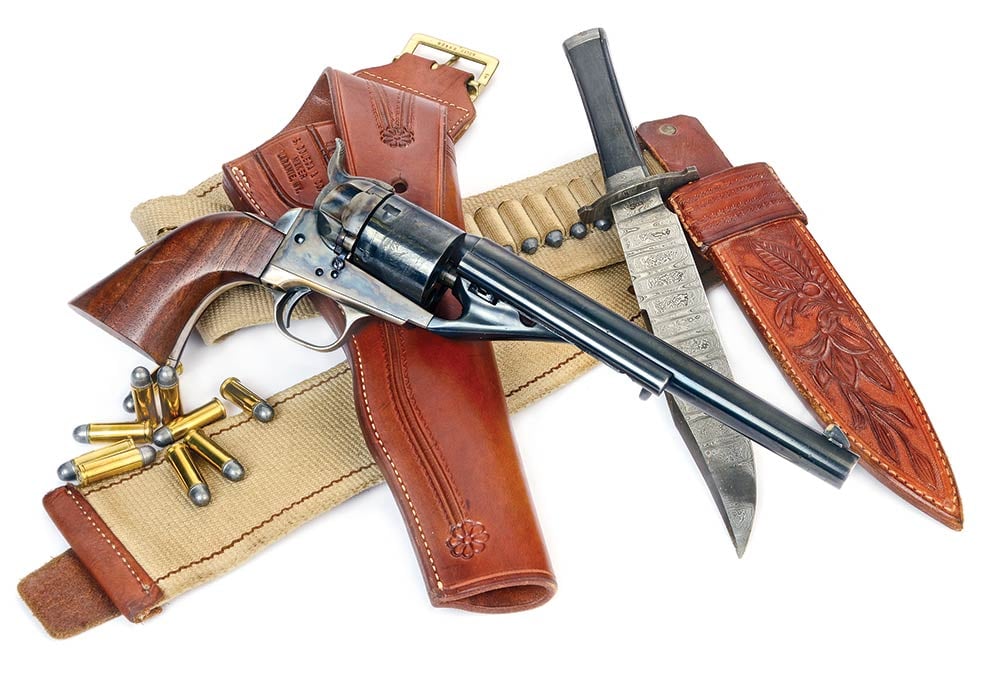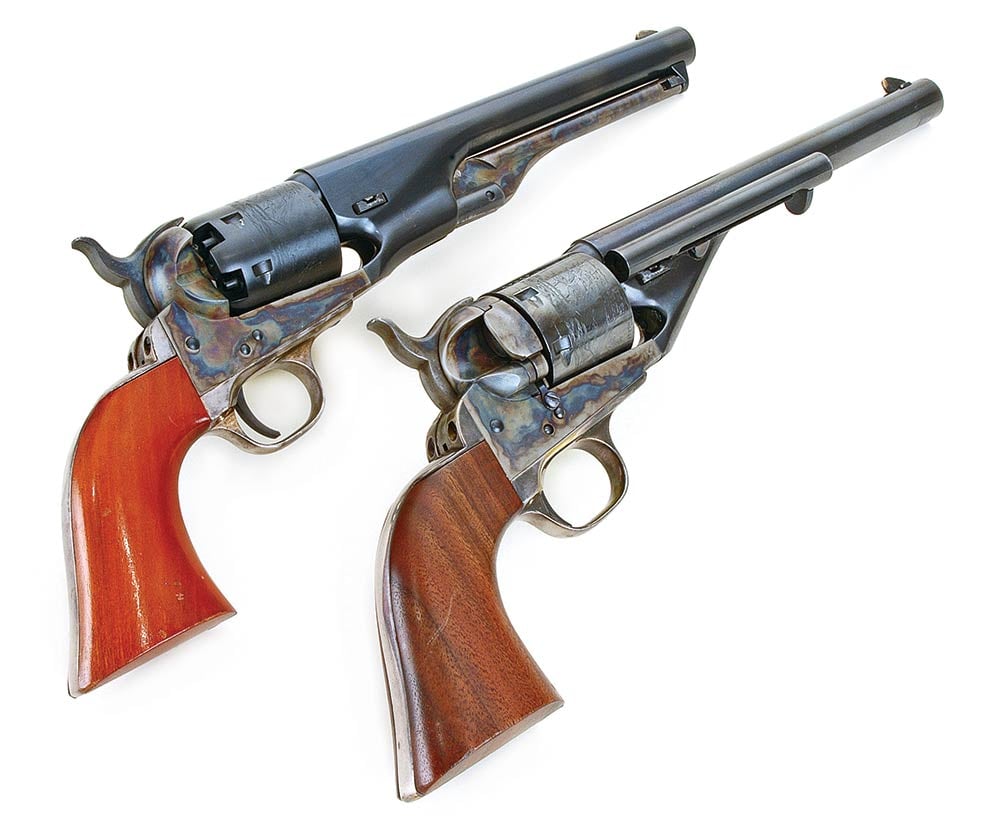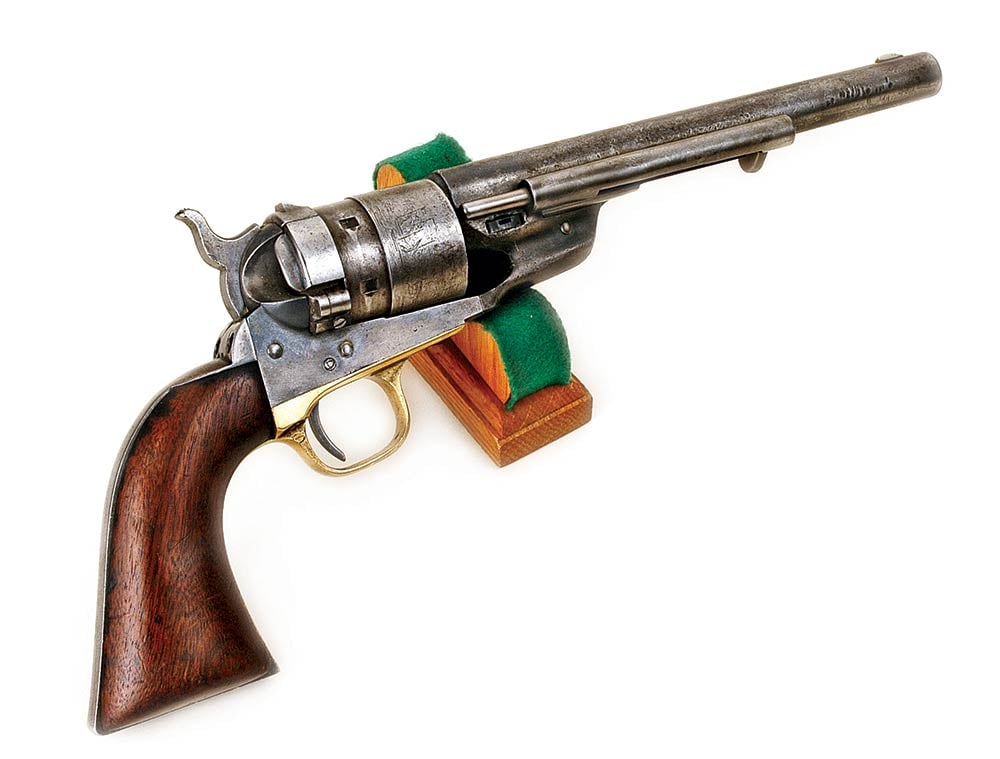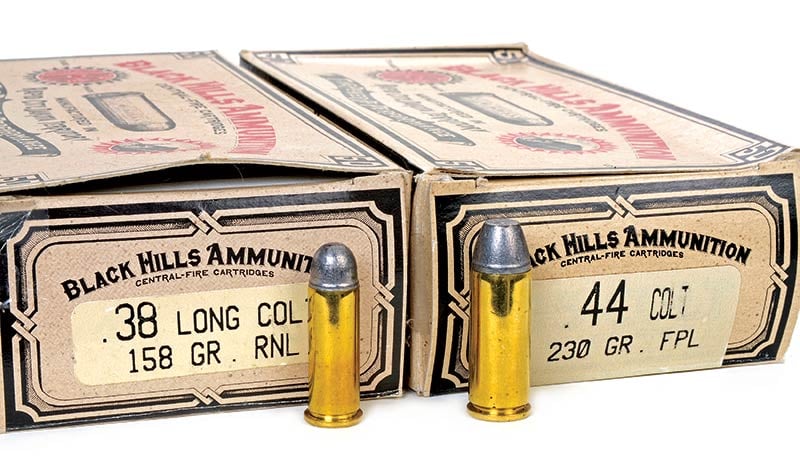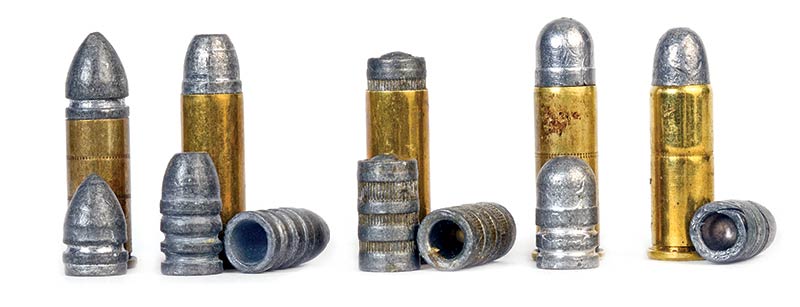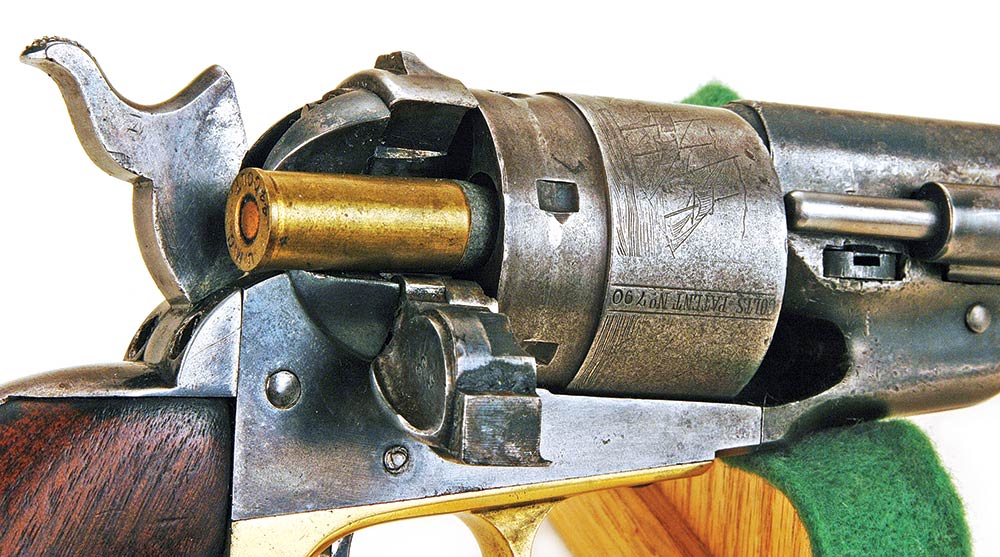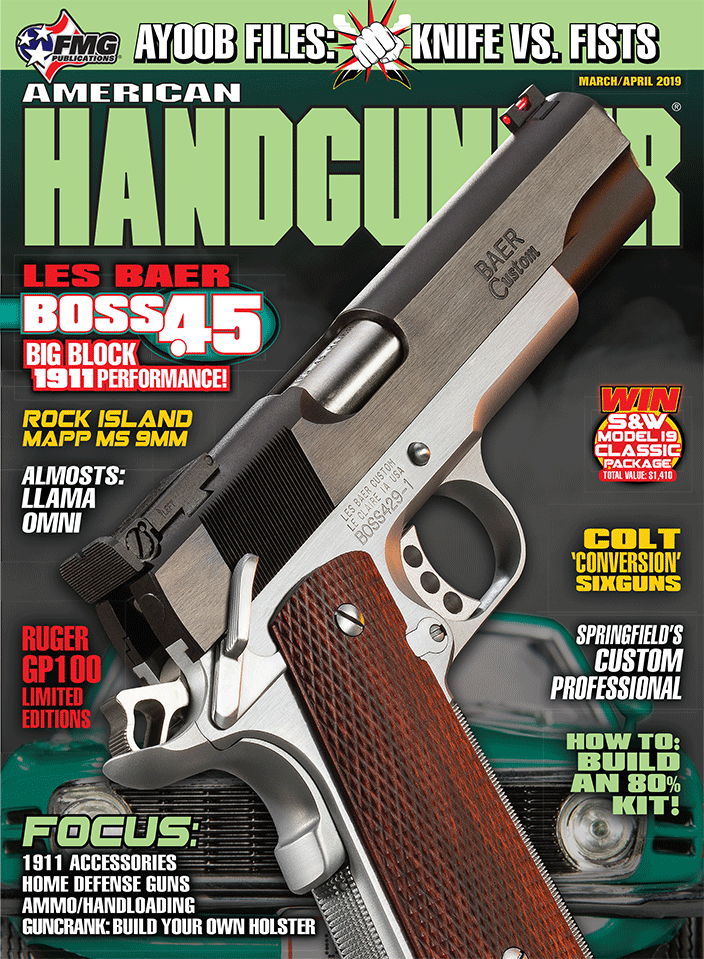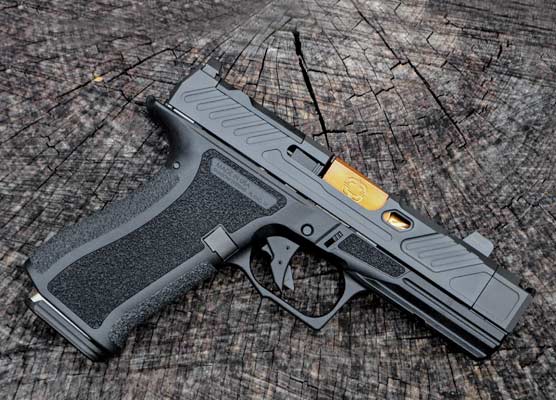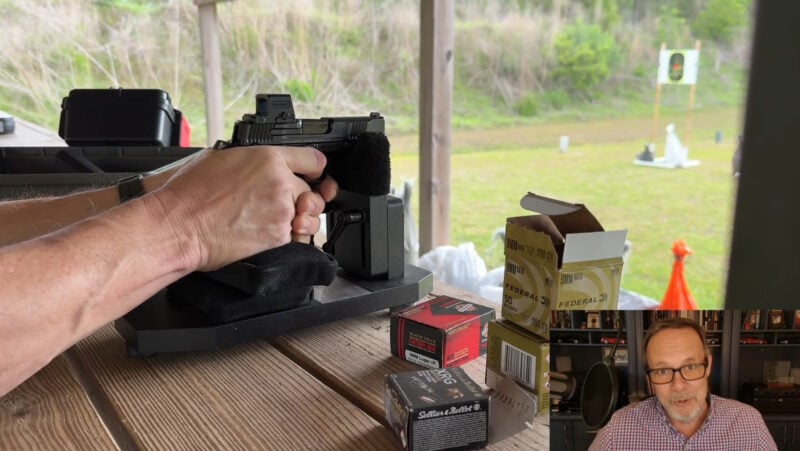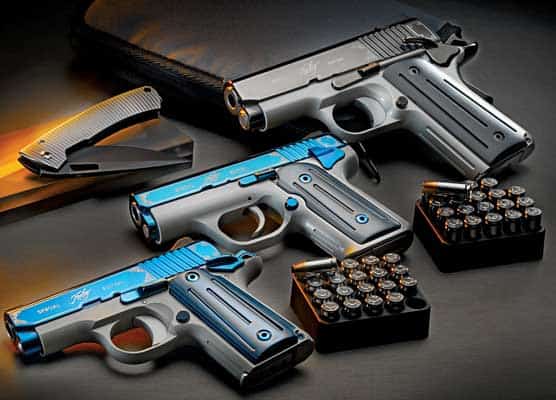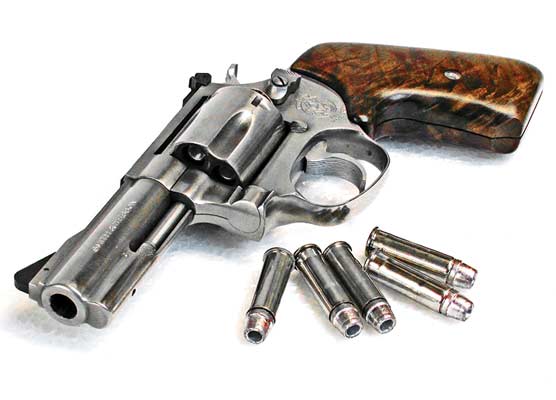Colt 'Conversion' Sixguns
Did they really exist? Did Colt convert existing guns?
Colt Conversion revolvers have a confusing story, branching off in several directions. First off, what is a so-called Colt conversion? In common parlance it’s a Colt revolver whose basic design dates from the cap-and-ball era. But it actually fires metallic cartridges instead of paper ones or loose powder and ball.
Note in the last sentence, the word conversion was never used. That’s because the Colt factory did not actually convert cap-and-ball revolvers to fire metallic cartridges. Instead the idea of conversions to them was with the “concept” and not with actually converting existing handguns. An owner of say a Colt .36 “Navy” cap and ball sixgun couldn’t just send it back to the Colt factory and say, “Please convert it to fire cartridges.” However, some ambitious gunsmiths certainly took on such work.
To Colt’s executives factory “conversions” created a means to sell the thousands of obsolescence parts in stock from the cap-and-ball era. They wanted to avoid the financial loss with those parts as new metallic cartridge revolvers became all the rage. The “parts” in question encompassed most everything except cylinders. Colt’s factory Conversions were fitted with newly manufactured cylinders for metallic cartridges. Sources vary but collectors believe about 12,000 .44 Conversions were made at the factory, and about twice that many .38’s.
They came in several versions of both bore sizes. The only original I’ve owned was a Richards Conversion in .44 Colt based on the Model 1860 Army frame. The U.S. Army actually purchased 1,200 of those in 1871 for use by cavalry and some saw combat against Apaches in Arizona and New Mexico. My experience with the original led me to a couple of other conversions. More on them shortly.
The .38
Caliber .38 conversions were built on Colt’s Model 1851 and 1861 frames and I’ve seen those. Supposedly .38’s were also built on Colt Model 1862 pocket 5-shooters but I’ve never actually seen one. The .38 Colt chamberings were two: a rimfire and a centerfire. The latter round segued into the .38 Long Colt a couple decades later, by the way.
Here’s an important factor for potential handloaders. Colt .44 cap-and-ball barrels measured 0.451″ or more across their grooves and .36’s were 0.375″ or more. Therefore .38 and .44 Colt cartridges had to carry bullets to fit those dimensions. This necessitated heel-type bullets where the bullet’s lower part is the same dimension as the cartridge case inside but its full dimension is the same as the case’s outside. Look at a .22 LR for an example. At a later date ammunition factories lengthened the .38 Colt’s case, with the bullet made hollow-based to expand into those oversized rifling grooves — hence the name “.38 Long Colt.” Factory .44 Colts always had heel-base bullets.
.44 Richard’s Conversion
Now back to my original .44 Colt Richard’s Conversion. I made up some black powder loads for it and fired it on one occasion. This caused a crack in its frame. It was professionally repaired and sold to a non-shooting collector. However, I was not satiated with Colt conversions yet. I’d heard of a very talented gunsmith who could build some for me. He’s no longer making conversion so I won’t mention his name, sorry. For me he made two nigh-on perfect replicas of .44 and .38 Colt Conversion sixguns.
The .44 was based on an Italian Armi San Marco Model 1860. The gunsmith also had a spare barrel with a defect far down its 8″ length. He cut it to 31/2″ so I ended up with a clone of a Colt Richards Conversion with both long and short barrels. But, the true honey of a single-action “fun” sixgun was the .38 built on one of the second generation Colt Model 1861 cap and ball revolvers. You might ask, “Why the ’61? Colt’s Model 1851 is more historical.” That’s true but the 2nd Generation Colt ’51s have square back trigger guards my pudgy fingers find tight. The ’61s have rounded trigger guards.
When building these facsimiles the gunsmith asked if I wanted the original style barrel dimensions or he could line them down to have 0.429″ and 0.357″ groove diameters. With those barrel groove sizes reloading chores would be easier since modern lead alloy .44 or .38 bullets would suffice. But reloading chores have never intimidated me so I chose the original route. Having other .38 Colt revolvers, I already knew the secret to success with that round — it’s hollow base bullets. Most certainly heeled bullets were tried as an experiment but they just didn’t shoot very precisely.
Bullets
A company named Rapine Bullet Molds, now out of business, offered a design for a 0.357″, 150-gr. hollowbase. It shoots beautifully from my .38 Conversion but it’s dreadfully slow to cast. Therefore, I switched to 148-gr. Speer swaged lead, hollowbase, wadcutters. They shot even better than the home-cast ones. When loading black powder (17 grains/FFFg Goex) the Rapine bullet is used because I can lube them with SPG Black Powder Lubricant. When shooting smokeless (3.0 grains/Titegroup) then the Speer hollowbase wadcutters serve.
.44 Colt
As for the .44 Colt, this was an entirely new experience. The 208-gr. heel-base bullet design then offered by Rapine was a dead ringer for ones found in original factory loads. A charge of 27 grains of Goex FFg black powder fits perfectly under that bullet. Such a load from the .44 doesn’t shoot near as accurately as the .38, especially from the 31/2″ barrel.
But we’re not done yet. As cowboy action shooting reached its peak popularity in the 1990s the Italian firms, especially Uberti, began offering Conversion look-alikes. This means they appeared just as or very near the original Colt but were chambered for non-traditional cartridges. For example some were made as .38 Specials, some as .44 Specials and some others as .45 S&W “Schofields.” I’ve had the opportunity to try some of the Conversion look-alikes and they shot nicely. Hand- loading with them, of course can be done with the standard size and shape .38, .44 and .45 bullets used by other revolvers of this caliber.
And we’re still not done! The .44 Colt disappeared as a factory loading just prior to World War II. However, the .38 Long Colt was still produced by Winchester for many decades and wasn’t discontinued until late in the 1990s. I managed to buy several boxes when their end was announced and found them to shoot excellently in my .38 Conversion. A pulled 150-gr. bullet from one showed a deep hollowbase.
With cowboy action competition being so popular some other smaller factory ammunition companies took notice of the older cartridges. Black Hills Ammunition even added .38 Long Colt and .44 Colt. These factory loads will work fine in the modern Uberti Conversion look-alikes but their bullets are solids and merely keyhole when fired through the oversize barrels of Conversions built as were the originals. And of course no smokeless powder loads should be put into any of those originals.
Colt’s idea of Conversions was a sound one. They were a way for Colt to recoup expenses involved in making thousands of parts for cap and ball handguns. Perhaps as importantly, they filled a time gap from the end of the cap-and-ball era until the Colt factory was able to perfect their new “Strap Pistol” — which we all know as the Single Action Army Peacemaker.

